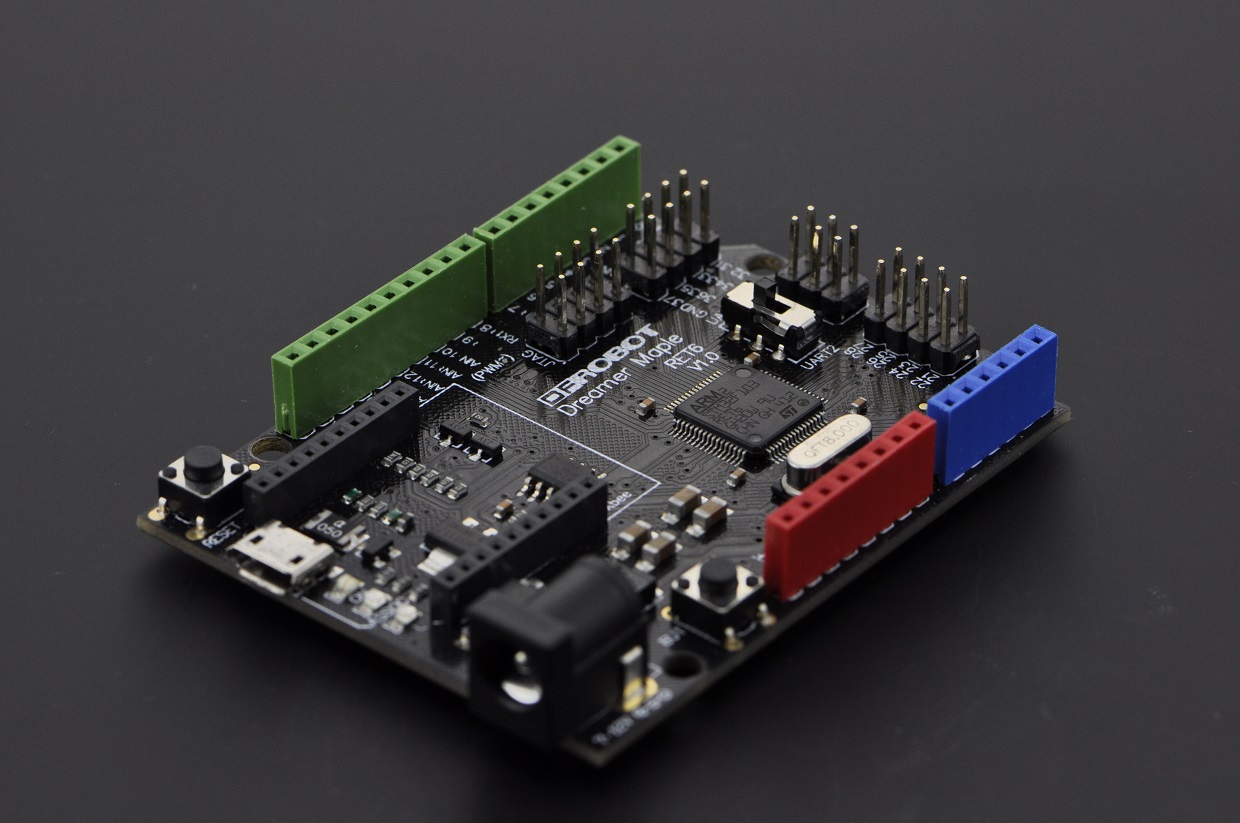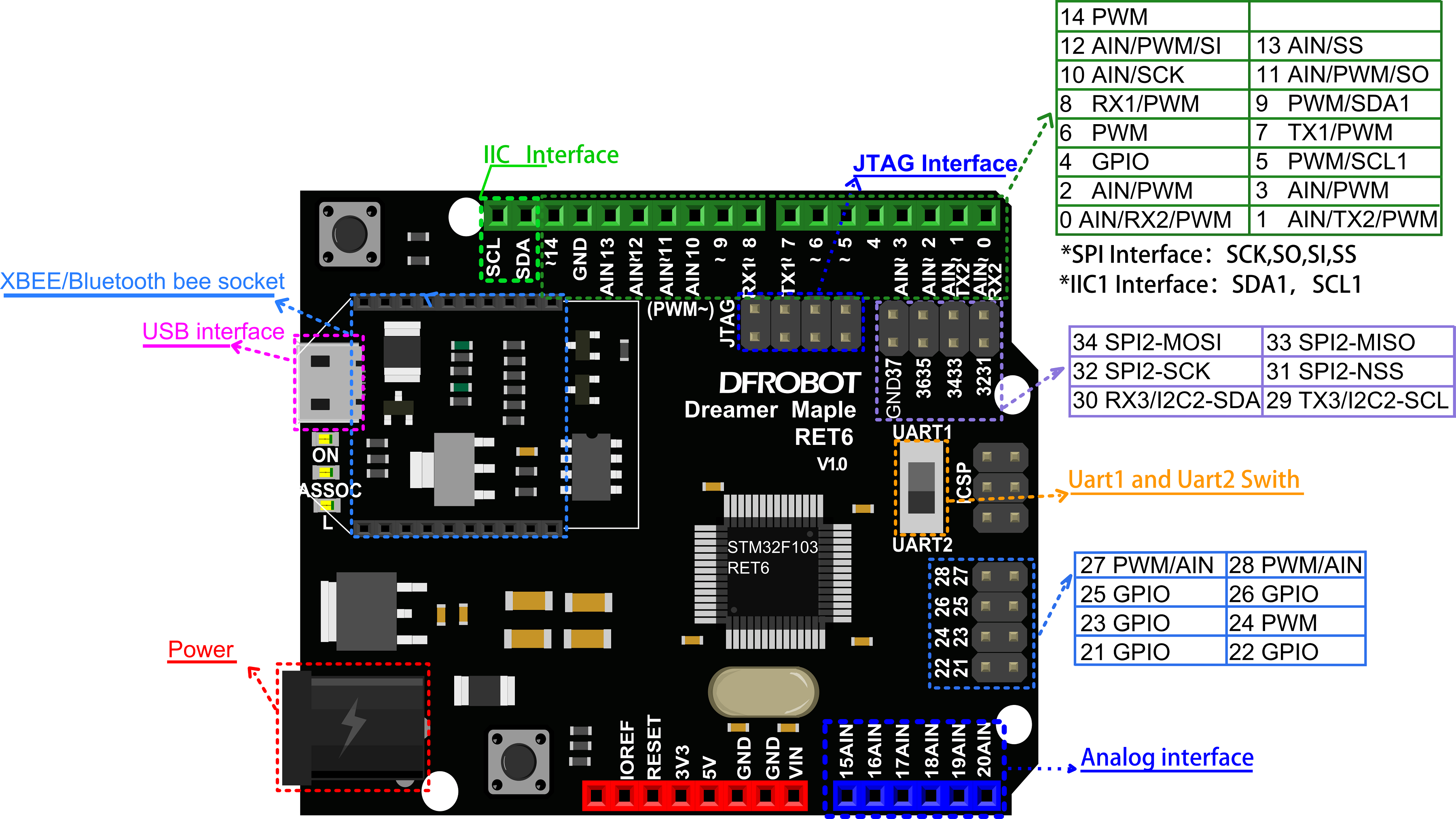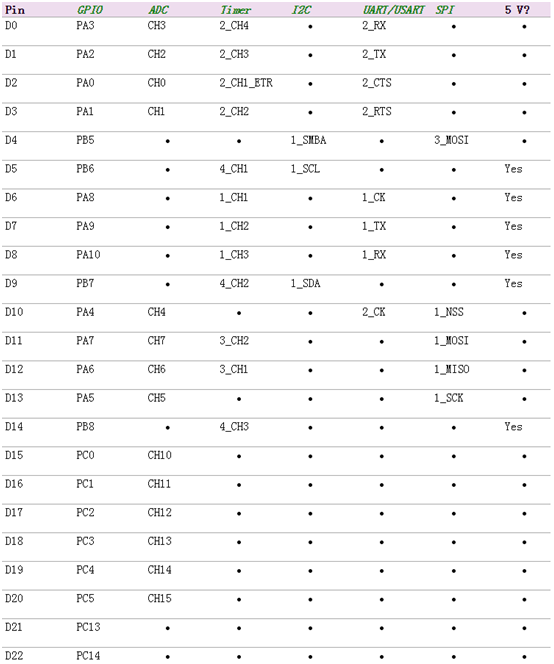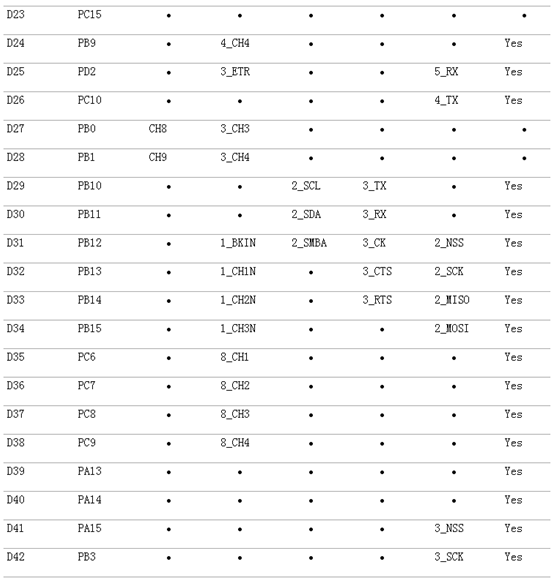Dreamer_Maple_V1.0_SKU_DFR0283 - jimaobian/DFRobotWiki GitHub Wiki

The Maple is a microcontroller board based on the STM32F103RET6 microprocessor. The Maple runs at a maximum of 72 MHz, has 43 digital input/output pins, 15 analog inputs, native full speed USB, 3 USARTs (hardware serial ports), integrated SPI/I2C support, a power jack, and a reset button. Maple is programmable over USB via our provided DFU bootloader, no extra hardware required! Users can also program the onboard program flash via external JTAG interface. Maple offers security support for read/write protected addresses, as well as User and Handler processor modes. It has a real-time sysTick, useful for a real time OS or any timing senstitive applications. 6 advanced interrupt timers will help you here as well. Maple can be powered via USB, a wall adapter, or it can run off of a rechargeable lipo battery (see below for more info). The Maple is compatible with shields designed for the Arduino Duemilanove or Diecimila. Maple is a great way to get started with an advanced 32 bit-processor that, until now, has principally lived in the commercial domain. Take your projects to the next level with Maple's fast clock, sophisticated interrupt architecture, and loads of built-in peripherals. Maple can be programmed using an Arduino-style, sketch-based programming environment, which is open-source and can be downloaded online at our website.
- STM32F103RET6: a 32-bit ARM Cortex-M3 microprocessor at 72Mhz
- Operating Voltage: 3.3 V
- 64KB RAM and 512KB Flash
- Dedicated USB port for programming and communications
- 2 advanced, 4 general-purpose, and 2 basic timers
- 15 Analog inputs at 12-bit resolution
- 18 PWM pins at 16-bit resolution
- 2 SPI peripherals with I2S support
- 2 I2C peripherals
- 3 USART Serial ports
- 12 Channels of Direct Memory Access (DMA) (dma.h) with 2 DMA controllers
- Low power and sleep modes
- Input Voltage (recommended): 7 V — 12 V
- Support wireless XBEE interface

- GPIO Information
The RET6 Edition features 38 ready-to-use general purpose input/output (see GPIO) pins for digital input/output, numbered D0 through D37. These numbers correspond to the numeric values next to each header on the Maple silkscreen.
Pin D38 is the board’s button pin. It is thus mainly useful as an input. The pin will read HIGH when the button is pressed.
More GPIOs (numbered D39–D42 on the back of the RET6 Edition’s silkscreen) are available if you use the disableDebugPorts() function; see the board-specific debug pin constants for more information. (See this erratum for information about the pin numbered 43 on the silkscreen).
- This table shows a summary of the available functionality on every GPIO pin, by peripheral type. The “5 V?” column documents whether or not the pin is 5 volt tolerant.
Note that this table is not exhaustive; on some pins, more peripherals are available than are listed here. 

 shopping digital magnetic sensor sku: dfr0033
category: Product Manual category: DFR Series category: Sensors
shopping digital magnetic sensor sku: dfr0033
category: Product Manual category: DFR Series category: Sensors